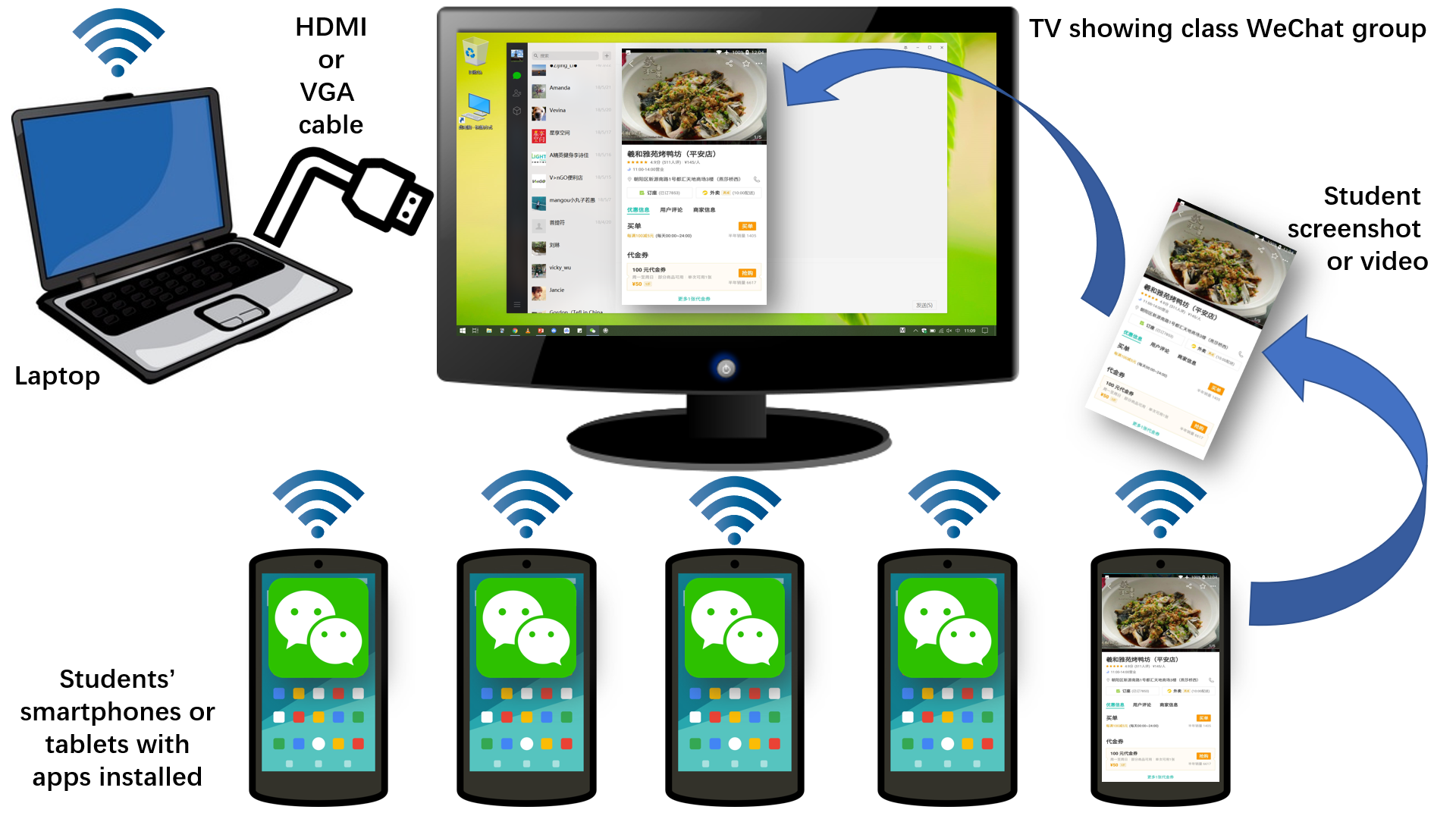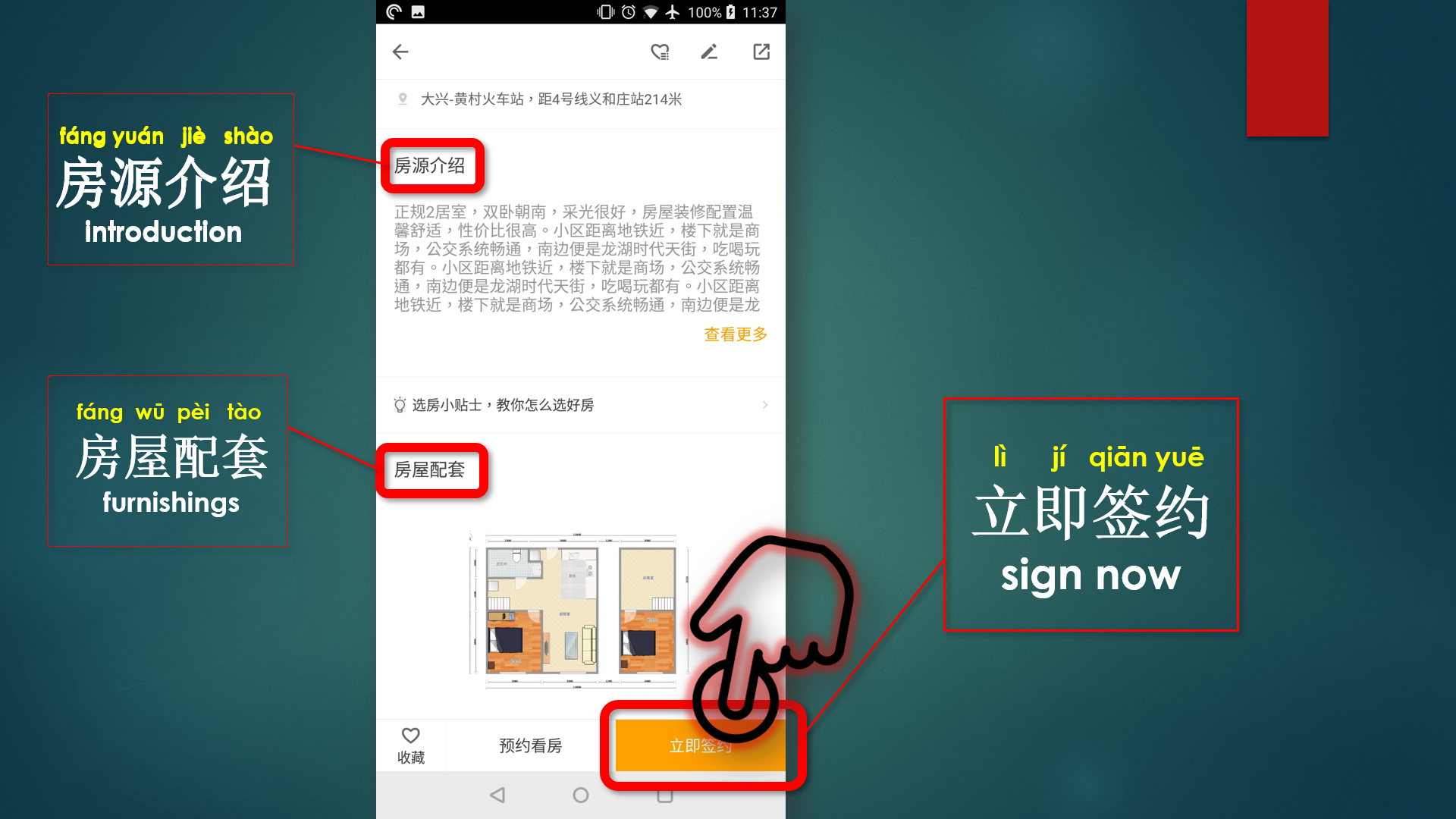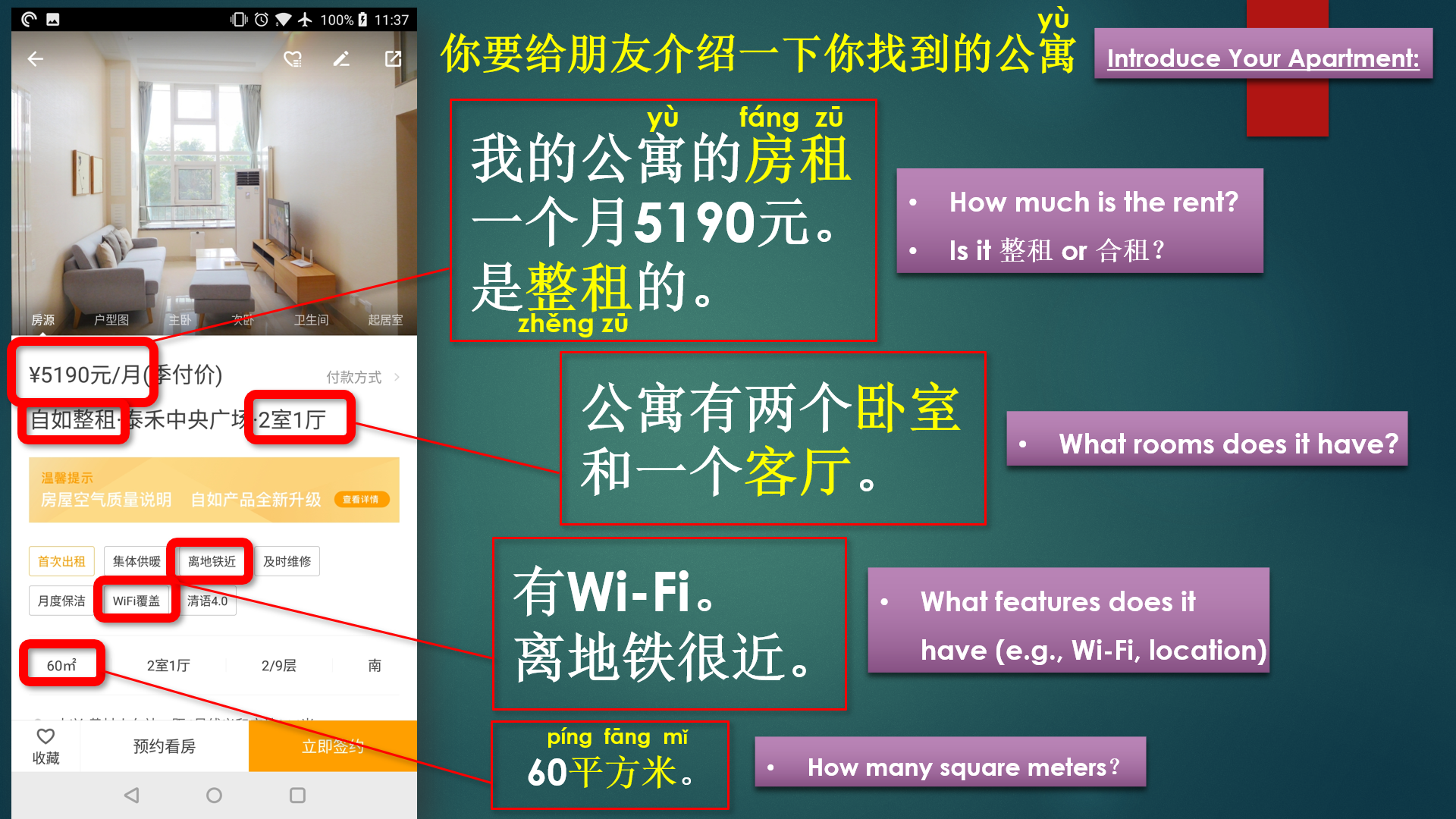Content-Based Instruction Using Chinese Mobile Apps
[This is an invited post from Thomas N. Rooks, 榮天漠]

Introduction
Daily life in mainland China has been transformed by the rise of mobile apps. For instance, mobile payment apps have turned China into a nearly cashless society, and you can now travel without buying a metro card or queuing up at a ticket counter. With just a smartphone, you can also rent a bicycle, get an apartment, or book a doctor’s appointment. The Chinese government is even developing an app with the makers of WeChat for citizens to use in place of official ID cards. These apps present an exciting opportunity for language educators, as they can be used to create engaging content-based activities and projects.
Example: Middlebury College Chinese School
This summer, as part of my teaching practicum at Middlebury College, I developed a thematic unit and mock lesson based on the use of Chinese mobile apps. With the theme of “入鄉隨俗” (equivalent to “When in Rome, do as the Romans do”), students simulate moving to and exploring China via a variety of apps:


Equipment and Setup
Equipment and setup are both relatively simple:
- The teacher installs WeChat on his or her laptop.
- The teacher forms a class WeChat group, which each student then joins.
- Each student installs the lesson app(s) on his or her smartphone/tablet and sends a screenshot to the group to confirm that they have done so. This way, the teacher can be sure ahead of time that all students are prepared.
- With the teacher’s laptop connected to the TV, students can send screenshots and video to the WeChat group (or individually to the teacher) to share what they are doing in real time (see Figure 1).

Fig. 1: Equipment and Setup
Presenting Chinese Mobile Apps with PowerPoint
I chose to present the apps using PowerPoint, so that I could use graphics, text, and animations to provide content scaffolding (see Figures 2 and 3). If you would like see how I programmed the animations, you can download the PowerPoint using the following link: https://drive.google.com/open?id=1Iydx1X4kV0z47A-xW5kLGFySTar5A7i3.
Apps could also be presented by plugging a smartphone or tablet directly into a TV, or by using Bluestacks, an application that can create a virtual Android smartphone on any PC or Mac (https://www.bluestacks.com).
 Figure 2: ZiRoom App Presented Via PowerPoint
Figure 2: ZiRoom App Presented Via PowerPoint

Figure 3: ZiRoom App Presented Via PowerPoint
Reflection
While students’ Chinese ability might be quite limited, they have all grown up with smartphones and tablets from a very young age. As a result, they possess a strong intuition for figuring out how to use new apps, even in a foreign language. However, it is important to determine precisely what learning is desired and what evidence students need to provide in order to demonstrate that they have achieved the learning objective(s). In addition, activity sequencing and scaffolding must be carefully designed to allow students to succeed and prevent them from feeling overwhelmed.
Creating a class WeChat group for use in conjunction with the activities allows students to share screenshots and video in real time, which can form the basis of lively classroom discussion, co-teaching, and student presentations. In addition, students could use app screenshots and videos to create their own multimedia projects.
Future Development
With so many apps available, the potential for content-based learning activities is limitless. These activities can not only help students gain the day-to-day “survival skills” needed to thrive in China, but also develop greater cultural competency through exposure to authentic content. Because apps are full of rich cultural content that touches upon all aspects of modern life, they can be integrated into virtually any thematic unit. In the future, the use of Chinese mobile apps can grow into a vibrant area of content-based instruction.
About the Author
Thomas Rooks is a recent graduate of Middlebury College’s Chinese MA program and currently works as a bilingual EFL instructor at Beijing Capital University of Finance and Economics. He has a strong interest in technology integration in language learning and also studies Japanese.